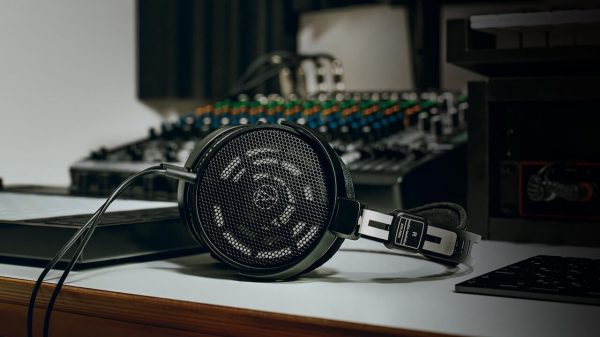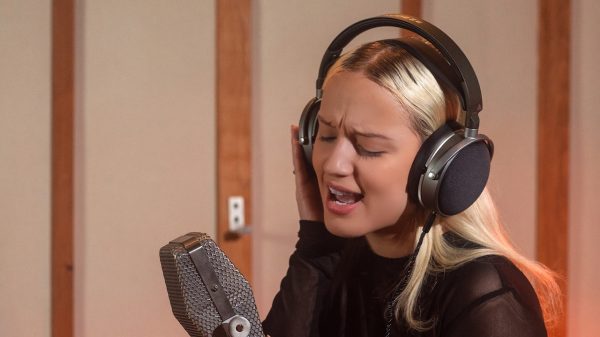Helping People Through Historical Transition
On the eve of an historic technological transition to digital television, the focus for the two federal agencies managing the switch is on helping Americans who are at risk of losing their TV signals.
The digital TV (DTV) transition began over two decades ago as engineers set an ambitious technological goal: moving broadcast television into the digital age. Efficient digital technology would provide consumers with a better picture and sound and more channels, while at the same time clearing valuable airwaves to meet the explosive demand for advanced wireless services, including first-responder radio.
The transition also had a policy goal: to make the switch with as little disruption to the public as possible. That’s why the Federal Communications Commission and the Commerce Department’s National Telecommunications and Information Administration are intently focused on making sure as few people as possible lose access to the valuable news, information and entertainment programming they count on.
Just as the transition is an unprecedented engineering feat, it also involves an unprecedented community outreach effort by the agencies to households most affected by the transition. Those households include low-income families, senior citizens, minority and non-English speaking households and people with disabilities.
“In any change this big, there are going to be disruptions,” said FCC Acting Chairman Michael J. Copps. “We are trying our best to provide people, especially those who are most at-risk, with the help they need to make the switch as smoothly as possible. And we’re going to keep offering it after June 12, so people should call us at 1-888-CALL-FCC.”
“The nation’s DTV transition is a tremendous undertaking,” said NTIA Acting Administrator Anna M. Gomez. “The overwhelming majority of Americans are prepared, but despite our best efforts, some will lose television service tomorrow. Consumers should know that even after June 12, they can still apply for coupons to help them purchase TV converter boxes.”
Outreach and resources offered by the two agencies include:
- Distribution of 59 million $40 coupons for TV converter boxes
- Redemption of nearly 31 million coupons
- Continued availability of TV converter box coupons for consumers who apply up until July 31, while supplies last, at www.dtv2009.gov, 1-888-DTV-2009, and also by fax and mail
- Establishment of over 600 walk-in centers providing hands-on help
- Assistance for consumers who are deaf or hard-of-hearing through Communication Services for the Deaf at 1-877-388-4968, 1-877-889-4279 (TTY), 1-866-351-1950 (video phone), 1-888-CALL-FCC, and www.c-s-d.org
- Capacity for up to 200,000 home installations of converter boxes by FCC contractors
- Home installation of converter boxes by AmeriCorps volunteers in 30 markets
- In-home installation available from 57 fire departments nationwide
- In-home and walk-in services available through June, and in some cases, through July
- Toll-free call center, 1-888-CALL-FCC, which expanded to 24-hour operations yesterday, with 4,000 agents on duty over the next few days
- Over 200 FCC employees sent to every state and every market in the country to educate the public about preparing for the transition
- Help with applying for coupons and installing converter boxes for more than 350,000 consumers in more than 180 cities provided by NTIA grantees, the Leadership Conference on Civil Rights Education Fund (LCCREF) and the National Association of Area Agencies on Aging (n4a), plus coupon donation programs in over 30 cities
- Over 50 visits by FCC Commissioners and Department of Commerce officials to markets nationwide
- Upgraded www.dtv.gov has received more than 24 million hits in May alone, providing consumer-friendly information about the transition
- Reception information searchable by zip code at http://www.fcc.gov/mb/engineering/maps/
- Helpful “DTV Made Easy” brochure by Consumer’s Union, which became the most popular document on the DTV Website at http://www.dtv.gov/imagesnew/home_ban_cu_brochure.jpg
- Extensive media outreach in home stretch, reaching 5,000 media outlets with releases detailing local statistics and events, satellite media tours reaching 18 target markets, radio actualities reaching 5,000 stations, daily “countdown” releases generating press coverage, radio PSAs in English, Spanish, Vietnamese, Korean, Simple Chinese, and more
- Engagement of more than 1300 community-based organizations serving at-risk populations to educate consumers on DTV readiness
- Collaboration with hundreds of local elected officials serving at-risk populations to ensure their constituents know about the extensive help available to get ready
- NTIA’s Mobile Assistance Centers — DTV clinics on wheels –at more than 211 events, helping close to 38,000 consumers with more than 5,700 coupon applications and distributing 31,000 pieces of information
[Source: FCC.gov]























